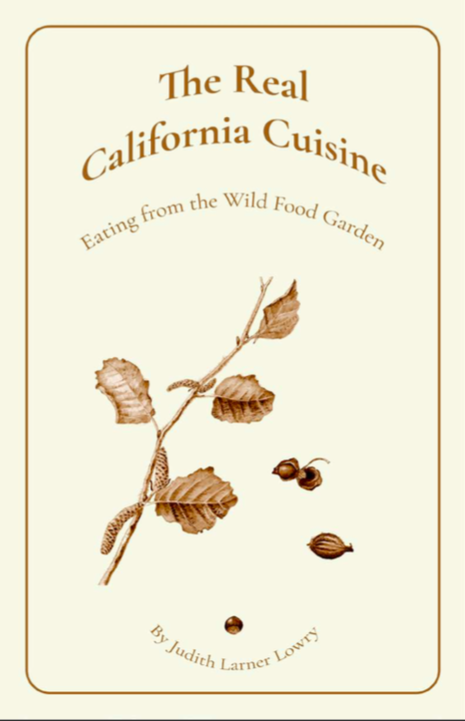The Real California Cuisine
The Real California Cuisine
Couldn't load pickup availability
The Real California Cuisine: Cooking from the Wild Food Garden
by Judith Larner Lowry
45 pages
Revised and Reprinted Edition
Here is our expanded and revised edition of "The Real California Cuisine; A Treatise on California Native Plant Foods, Including Recipes." In our 45-page booklet, we ask: Why is there no "Real California Cuisine" in California Cuisine? In a state with 52 different tribes and the largest indigenous population in the country, why are so few native species included in this regional cuisine? To help answer the question and redress this omission, we have revised and reprinted the 6th member of our "Notes on Natives" series. We first published this "Notes" in 1991, to modest interest. By the time of our revision and expansion twenty years later and then again in 2012, that had changed. Interest in foraging and indigenous land practices are now well established.
In the last twenty years, I spent many hours in the pleasurable investigation of numerous ethnographies and interviews for those rare jewels of information that illuminate the way Californians ate for the last 12,000 years, and how the land was managed during that time. The technologies of food preparation were intricate and varied. Learning about them deepens our sense of connection to the land and its previous inhabitants.
Though information from the past sets the intriguing context, the focus of our booklet is on incorporating these foods into a modern diet. We include a mouthwatering recipe for acorn meal biscuits created by Elizabeth Barnet, (Project Coordinator, West Marin Commons Ethnobotany Study Group), our famous wildflower seed cookies, our blue wildrye gomassio, my favorite California breakfast, the California cracker, and others. We hope you'll be caught by the fascination of this whole ethnobotanical endeavour. And experience as well the sorrow for the loss of so much finely-honed information from indigenous Californians, alongside gratitude for what remains.
As ethnobotanist David Barrows said of the Cahuilla in 1900, "Many of the trails once trodden in quest of food are now abandoned; great stones filled with mortar holes remain along the pine ridges and in the canons of oaks, where no Indians ever come now to gather and grind their seeds." Barrows might be surprised by the renaissance of interest in these matters.
Maybe in your kitchen, a few or many of these traditions could continue.
Testimonials include the following, from Suzanne Doyle, of Palo Alto, Ca. "This morning, reading your "The Real California Cuisine," I felt I should be kneeling with thanks for the wisdom that graced every page."
Groveling is not required, but it's always appreciated.


